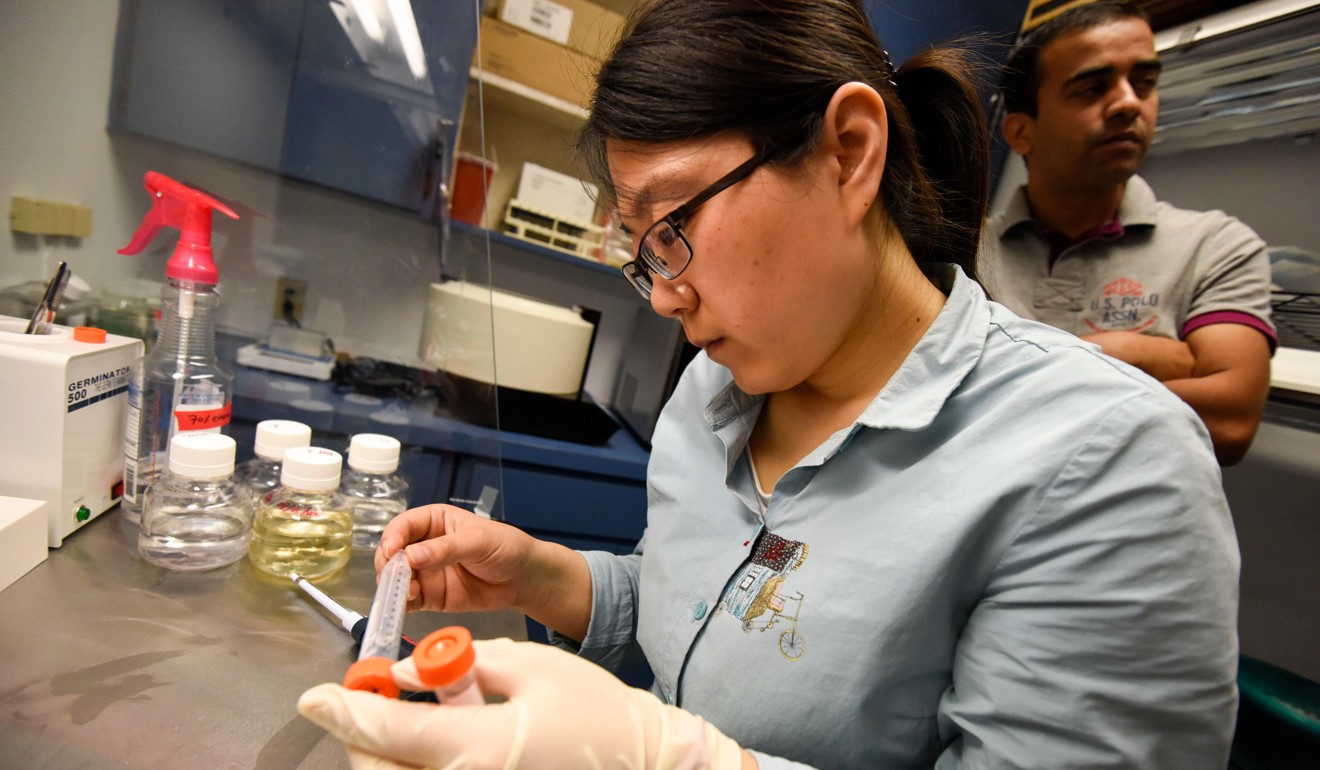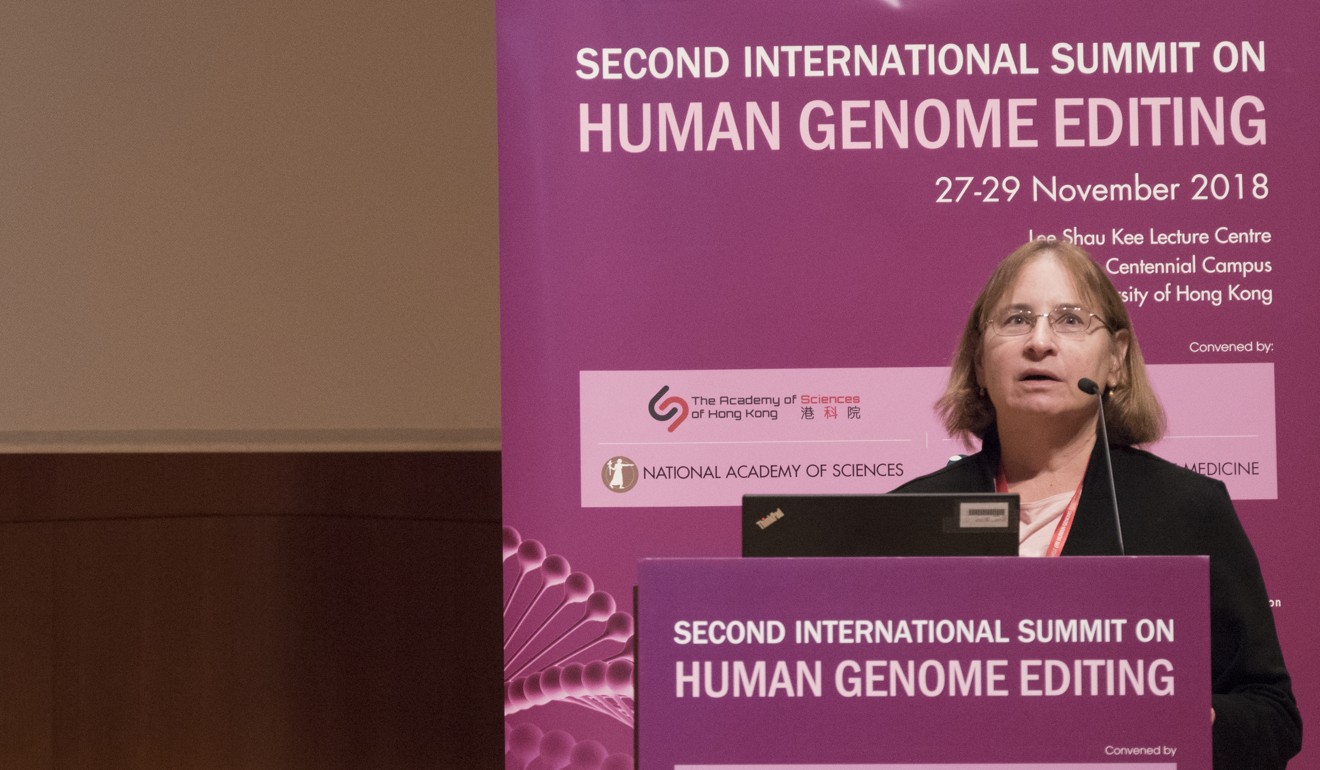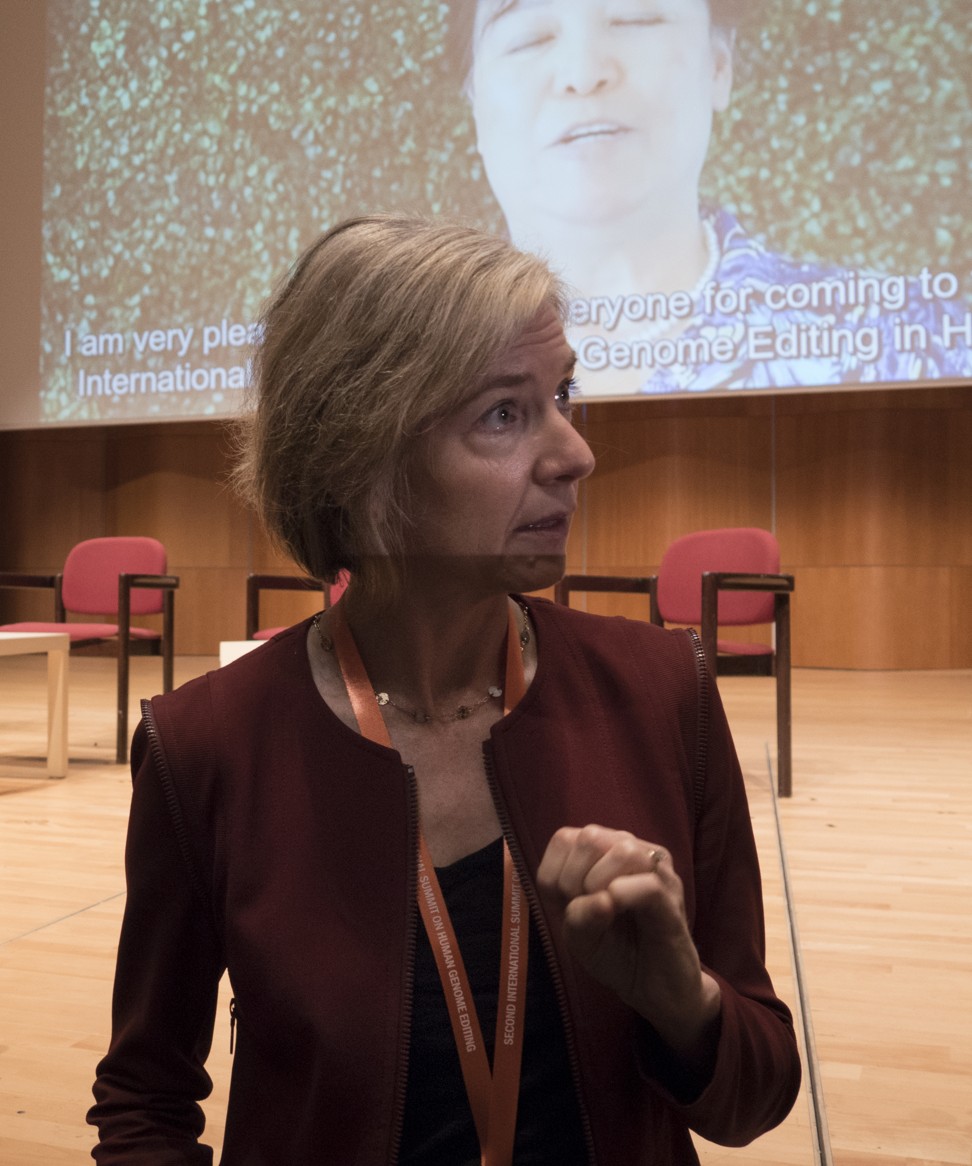
The future of gene editing: ending disease or creating super-soldiers or a master race? Why rules are needed
- Chinese scientist He Jiankui’s intentions in creating world’s first genetically modified human babies were ostensibly good, but the technology has clear risks
- Scientists and a biohacker think it inevitable people will seek to use it for self-enhancement, making global regulation of its use vitally important
Within this century, human beings will be capable of changing their genes to modify traits like intelligence, or even instincts like aggression, the renowned physicist Stephen Hawking predicted. Months after his death earlier this year, a scientist in China shocked the world by announcing he had created the world’s first genetically modified human babies – a step towards the future Hawking envisioned.
Chinese scientist He Jiankui’s use of gene editing tool CRISPR-Cas9 to engineer the birth of twin girls Lulu and Nana triggered a torrent of international criticism earlier this month.
China pins its hopes on beating US in bio-intelligence race
Despite He’s ostensibly good intentions in making the girls resistant to HIV – their father is positive for the immunodeficiency virus – scientists gathered at the Second International Summit on Human Genome Editing in Hong Kong condemned his intervention, which has not been independently verified, as irresponsible and a violation of international scientific norms.
For all the focus on He’s case, less coverage has been given to what impact the capability for real-time human genome editing will have around the world.

“Laws will probably be passed against genetic engineering with humans. But some won’t be able to resist the temptation to improve human characteristics, such as the size of memory, resistance to disease and the length of life,” wrote Hawking in a set of essays posthumously published in Brief Answers to the Big Questions.
Scientists have touted applications for genome editing as being beneficial for treating ailments and even curing diseases such as sickle cell anaemia and, potentially, cancer.
Consider vaccination, which involves voluntary or mandatory participation as part of countries’ public health systems. Scientists have said that genetic modification could eventually be seen in a similar manner, as a way to treat diseases to protect national populations.
Stephen Hawking’s final fear revealed: a race of superhumans
“Certainly for communities where there is a particular genetic disease that is incredibly common, where you can demonstrate that it is effective and safe to use, then, yes, there should be some encouragement to allow this to happen – promote it, even,” says Robin Lovell-Badge, head of the laboratory of stem cell biology and developmental genetics at the Francis Crick Institute in London.
One example of where this could be applied to treat a common hereditary condition would be for the treatment, or possibly the eradication, of sickle cell disease. In the United States, it afflicts 100,000 people, and occurs in one out of 365 African-American births, according to the US Centres for Disease Control and Prevention.
If governments were to start modifying their populations’ genes on a mass scale to treat genetic ailments such as sickle cell disease, would that pave the way towards the eventual use of this technology for enhancement?
“Oh, that’s going to happen for sure,” says Derya Unutmaz, a Connecticut-based immunologist and principal researcher at Jackson Laboratory.
“At the military level you can imagine you want to create super-soldiers who can withstand all kinds of diseases and tough weather and carry hundreds of kilograms. These were science fiction, but now we have the tools that could enable them,” he says.

If a country took such a step, it could encourage other countries to follow suit to avoid being overtaken, Unutmaz says.
One way to counter this would be to have a global regulatory system for genetic modification that could prevent or discourage countries from abusing it.
“We’re going to have to deal with that, but I’m very optimistic for the future of humanity, because we have [had] the ability to completely destroy ourselves many times over, but somehow we didn’t, and every time we have a problem caused by technology, we come out with a counter-solution,” he says.
Lovell-Badge says using the technology to edit genes to safeguard people’s lives could protect other aspects of the gene pool. “It is allowing people with their particular genetic combination who would have died to survive.”
These potential applications open up questions about how this would affect the social and economic gap between the poor and wealthy. Hawking anticipated that, once superhumans appeared, there would be major political problems with the “unimproved” humans – who won’t be able to compete.
“Presumably, they will die out, or become unimportant. Instead, there will be a race of self-designing beings, who are improving themselves at an ever-increasing rate,” he wrote.
Scientist who ‘created gene-edited children’ to speak at Hong Kong summit
Margaret Sleeboom-Faulkner, professor of social and medical anthropology at the University of Sussex in the UK, says that if gene-editing technology were to become successful, it would first be introduced in richer countries’ public sectors to help eradicate disease, then to their commercial sectors.
“It will be some kind of luxury for a part of the human population that is not available for others,” Sleeboom-Faulkner says.
“I don’t know to whose detriment this is, because it might not be an advantage,” she says, adding that there may be groups of people who prefer to stay unadulterated – who might want to procreate only with others whose genes have not been modified.

Maria Jasin, a developmental biologist at the Sloan Kettering Institute in New York, says that, in this scenario, gene editing would give children who already have every advantage an additional one, this time genetic.
“Of course, people breed, people get married for many reasons, but being within a similar class, or maybe looking for people who are very intelligent or have other physical attributes – that goes on all the time, anyway, and this will just be one more thing that gets added on to that.”
Widespread access to gene-editing technology could also persuade individuals such as so-called biohackers to use it for their own purposes.
US scientists try first gene editing inside human body
Biohackers have been known to attempt to modify themselves with a variety of technologies, and CRISPR-Cas9 has been added to their repertoire of tools.
In April 2018, the now-deceased CEO of biotech firm Ascendance Biomedical pulled down his trousers in front of an audience attending the BodyHacking convention in Austin, Texas and injected an experimental herpes treatment into his thigh. Biohackers under contract to his company had developed the treatment, and he was demonstrating how people could get around the US Food and Drug Administration’s stringent approval procedures.
One way to treat diseases is through somatic cell genome editing, which allows individuals to modify their own genes, but without the ability to transmit those changes to their offspring. According to scientists, this could be used to treat a raft of ailments, including cancer or blood disorders like thalassaemia.
I’m very optimistic for the future of humanity, because we have [had] the ability to completely destroy ourselves many times over, but somehow we didn’t
Some scientists say this has great potential, and CRISPR-Cas9’s low cost and effectiveness can even “democratise” treatments to allow a greater amount of people to modify themselves.
The other, more complex way to edit genes is through germ line editing, which involves modifying embryos at an early stage, in a way that will allow modifications to be passed onto future generations. This is more difficult to accomplish because it involves in vitro fertilisation, among other factors.
Prominent biohacker Josiah Zayner is CEO of The Odin, a company that sells do-it-yourself CRISPR-Cas9 kits. The proponent of the technology’s democratisation injected himself using CRISPR-Cas9 during a live stream in 2017 as an experiment to give himself larger muscles.
“Every technology has had people suggest that it will lead to terrible things once everyone can use it, from the printing press to electricity to the computer,” says Zayner.
“The skill and knowledge required to even attempt embryo editing is reasonably high. Very few people will try, and even fewer will allow someone to implant an embryo in them. It might never even happen. However, I do imagine that professionals will open clinics in countries that don’t have medical regulation around embryo editing.”
Zayner says the biohacking community will not have a framework or guidelines because of the ease of which they can be circumvented.
What is gene editing? Who’s doing it? And is it right?
“How do you stop a person in rural China or the US from doing gene editing? Guidelines and frameworks need to be enforceable in some way and with genetic engineering that is difficult,” he says.
Even if there were regulations and they were to be enforced, the would-be biohackers could buy the necessary materials from other countries or make their own, as he did, said Zayner.
“I think a lot about safety and responsibility, but to me, genetic engineering technology is too powerful to not teach people about, regardless of risk.”

CRISPR-Cas9’s co-inventor, Jennifer Doudna, a professor at the University of California, Berkeley, does believe a framework regarding the technology’s use is necessary.
“There’s a real imperative to think about the nuts and bolts of a responsible path forward … I personally feel deeply disappointed that the technology was apparently used in the way that it was,” says Doudna, reflecting on He’s announcement of the birth of babies he had genetically modified.
The closing statement of the Second International Summit on Human Genome Editing described He’s announcement as deeply disturbing. It says his work had several flaws, including “a failure to meet ethical standards for protecting the welfare of research subjects, and a lack of transparency in the development, review, and conduct of the clinical procedures”.
China to investigate whether gene-edited twin experiment broke law
Even so, Doudna says it is important that the technology is not abandoned. “It is clearly going to have important impacts that will be positive in the future, and I urge everyone to remember that the technology itself is powerful and … has real opportunities for human benefit.”
Doudna says that a big challenge will be to determine how to use the technology responsibly in the context of international science, considering the fact that it is widely available.
“At some time in the future … I think we need the framework because we need to have the ability to refer to that when questions come up about: is this an appropriate use of germ line [editing]?”

